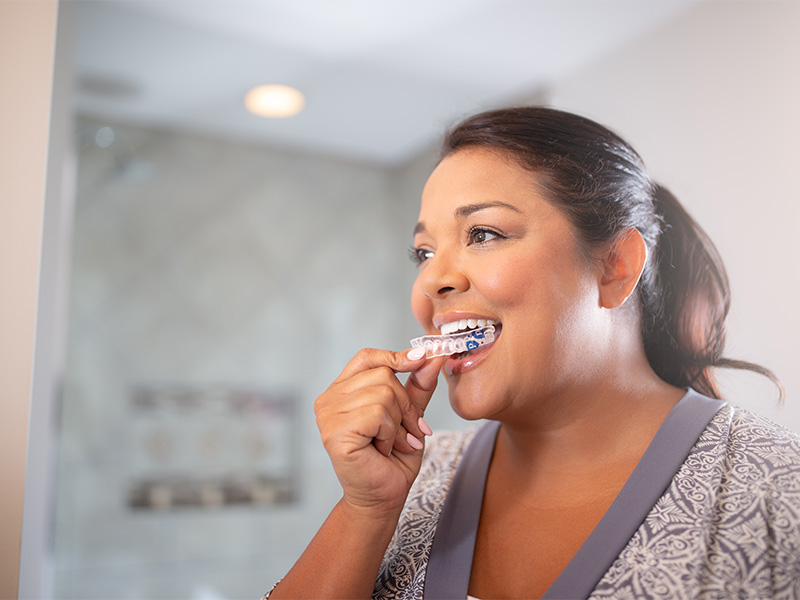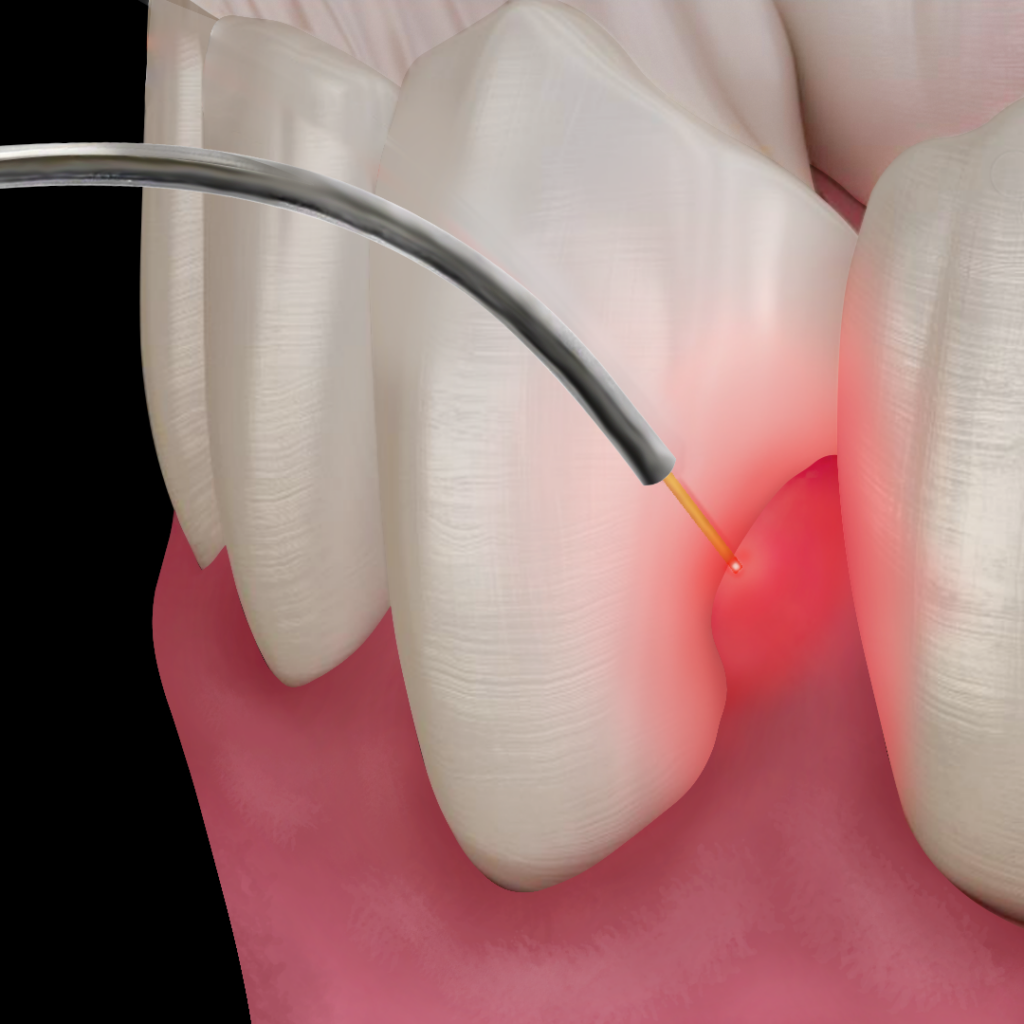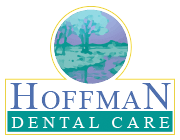
We must not only care for teeth themselves, but also the structures that surround them: the gums and tooth-supporting bone. Gum disease threatens these supporting tissues and that is why we, as dental professionals, are always on the lookout for early signs that patients may not notice. Gum disease typically starts with bacterial growth in the mouth and can lead to inflammation of the gums (gingivitis) and, if left untreated, can progress to more severe forms of periodontal disease. Infections in your gums may also contribute to other chronic health problems.
What are Gingivitis and Periodontitis?
Gingivitis is the earliest stage of gum disease. It’s often caused by poor oral hygiene, leading to the buildup of plaque—a sticky film of bacteria—on the teeth and along the gumline. The gums become inflamed and red, and may bleed easily during brushing or flossing.
If gingivitis is not treated, it can progress to periodontitis. In this stage, the gums begin to pull away from the teeth, forming spaces called pockets that can become infected. As the body’s immune system fights the bacteria, toxins produced by the bacteria and the body’s natural response to infection can break down the bone and connective tissue that hold the teeth in place. Over time, this can lead to tooth loss.
Risk factors for gum disease include:
- Poor oral hygiene
- Smoking
- Genetic predisposition
- Certain medications
- Hormonal changes (such as those during pregnancy or menopause)
- Systemic diseases (such as diabetes)
- Conditions that weaken the immune system.
Symptoms of gum disease can include:
- Persistent bad breath
- Red, swollen, or tender gums
- Bleeding gums when brushing or flossing
- Receding gums, making the teeth appear longer
- Loose or shifting teeth
- Changes in the way teeth fit together when biting
Periodontal Treatment Options
Treatment for gum disease depends on the severity of the condition. For gingivitis, improvements in oral hygiene and professional dental cleanings can often reverse the damage. However, for cases of periodontitis, treatments may include deep cleaning procedures such as scaling and root planing, medications, at-home treatments, and in severe cases, surgery to repair damaged tissues or regenerate bone.
Scaling and root planing (SRP) are deep cleaning procedures performed by a dentist or dental hygienist to treat gum disease, particularly in its advanced stage, known as periodontitis.
How Periodontal Procedures Work
Scaling involves the removal of plaque and tartar (hardened plaque) from the surfaces of the teeth, both above and below the gumline. When gum disease progresses, bacteria and toxins can cause the gums to pull away from the teeth, forming pockets where bacteria can thrive. Root planing aims to remove bacterial toxins, smooth rough areas on the roots of the teeth, and promote the reattachment of the gums to the teeth. This helps to reduce the depth of the pockets and prevents further progression of the disease.
In some cases, medications may be combined with scaling and root planning. An antibiotic is sometimes needed to be placed directly in infected gum pockets after treatment. The antibiotic releases over time to treat the infection over time and right where you need it.
Perio Protect

Another therapy we offer to improve the success of your periodontal treatment is The Perio Tray® by Perio Protect for at-home treatments. The Perio Tray® gently applies medication deep under the gums to fight the infections and prevent their recurrence. The Tray is comfortable, flexible, and custom-fit precisely for your mouth. Not only does Perio Tray® therapy help improve your health, it can also help you smile with more confidence. Patients using Perio Trays® report whiter teeth and fresher breath.
Click here for more Perio Protect information
LANAP and LPT

In cases of severe periodontitis, Dr. Hoffman uses a special dental laser to perform Laser-Assisted New Attachment Procedure (LANAP) or Laser Periodontal Treatment (LPT). During these treatments, a tiny fiber about the width of three human hairs inserted between the gum tissue and teeth, where it targets and destroys bacteria deep within the pockets of the gums without affecting healthy tissue. Because of the gentle nature of the procedure, patients typically see immediate results with less bleeding when brushing and less bad breath.
Patient Benefits:
- Faster Healing- LANAP®/LPT is minimally invasive and allows the body to recover and heal more quickly.
- Less Discomfort- Patients report less discomfort during and after surgery.
- Minimal Recovery Time- Most patients can immediately return to their daily routine.
- Little to No Gum Recession- The procedure doesn’t require cutting the gums, there is less risk of recession and your beautiful smile is maintained.
- Reduction in Gum Inflammation and Bleeding- The procedure targets inflammatory bacteria without injuring healthy tissue.
- Saves Teeth- Patients can keep their natural teeth sometimes even when the teeth have been deemed ‘hopeless’ with traditional treatments. Keeping your natural teeth has been linked to a longer lifespan!
- Safe for patients with Health Concerns- LANAP®/LPT protocol is safe for patients with health concerns such as diabetes, HIV, hemophilia, or those taking medications such as Plavix or aspirin.
Click here for more information on LANAP
Preventing Periodontal Disease
Your role in periodontal health begins with removing plaque everyday with effective brushing and flossing (this doesn’t mean scrubbing, which can cause your gums to recede). Of course, there are some areas of the mouth that a toothbrush and floss just can’t reach, which is why it’s so important to have regular professional cleanings at the dental office. Your regular dental exam is also a time when early signs of gum disease can be detected — before they become apparent even to you. Eating a nutritious diet low in sugar, and staying away from tobacco in all forms, will also increase your periodontal health — and your chances of keeping your teeth for life.
If you have any questions, please contact our office or click here to request an appointment!



